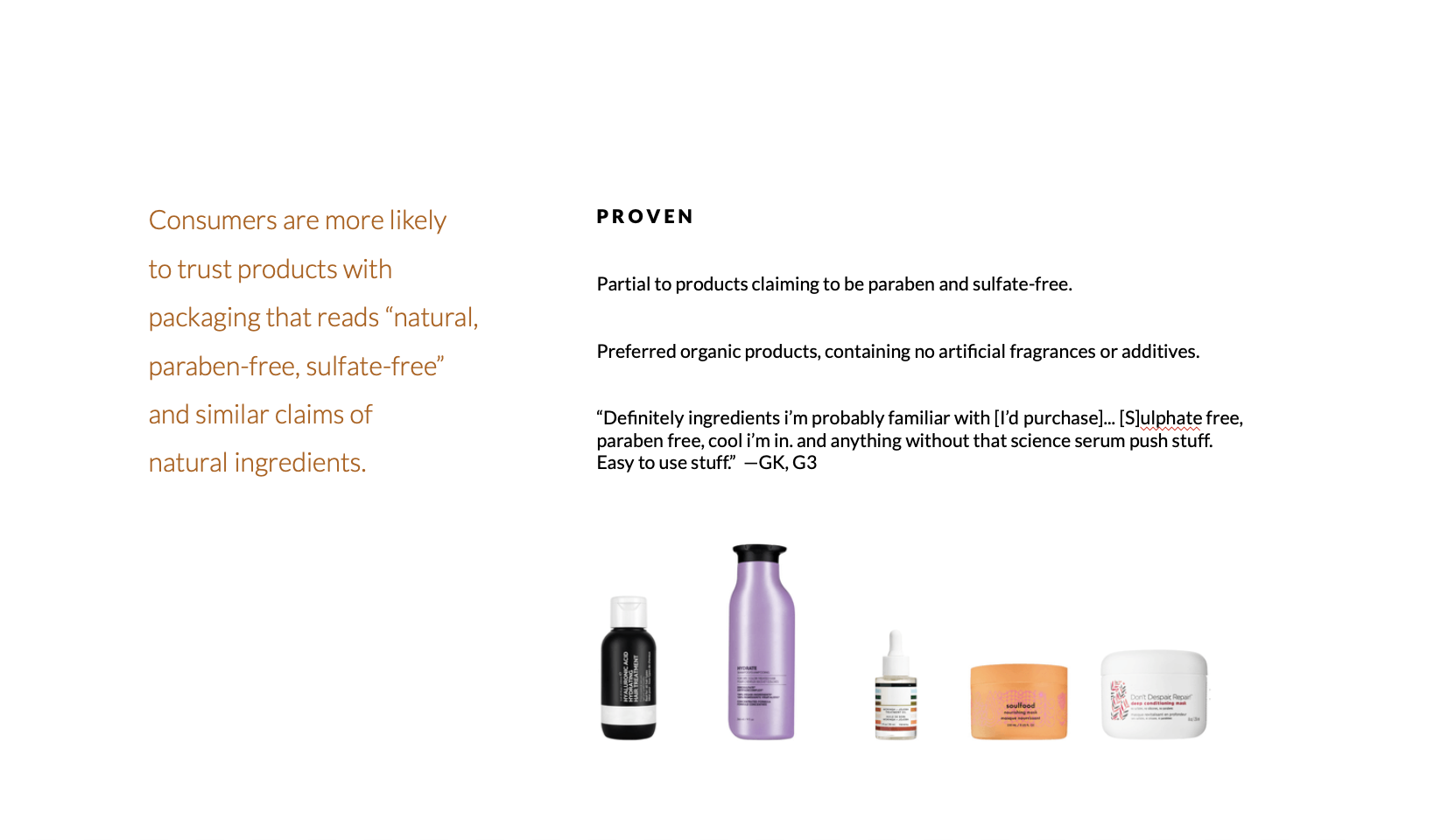the challenge.
Look for market opportunities in the hair care/scalp care category. Conduct research using the assigned qualitative or quantitative method. Create a research report with your findings leveraging reporting techniques, statistical analysis, and data visualization.
abstract.
A significant rise in the integration of hair and scalp treatments into regular self-care routines over the past couple of years has led our team to look at where there are market opportunities within the hair care/scalp care category. We’ve conducted qualitative research through several focus groups to analyze and compare hair care/scalp care behaviors and preferences across various demographics. We discovered distinctive drivers behind each demographics’ hair care/scalp care product uses and routines.
introduction.
The haircare industry has seen a recent transformation known as “skinification.” This has emerged from skincare’s influence on hair and scalp care, rooting itself in our overall self-care routines based on the notion that we should treat and care for our hair and scalp the same way we do for the rest of our skin. The rise of skinification is seen through a doubling in revenue for products like hair masks and scalp treatments in 2021 from 2019. 80% of women in the U.S. in 2021 have also reported washing their hair an average of 2-3 times per week, indicating that women are prioritizing the maintenance of their hair health. In recognizing this demand, we sought to explore where there may be new opportunities within this growing market.
methodology.
Our assigned research methodology was to conduct focus groups in order to identify these spaces in the hair/scalp care market.
hypotheses.
results.
hypothesis 1
hypothesis 2
hypothesis 3
discussion.
The conduction of this focus group research has highlighted several opportunities for brands within the hair care/scalp care market. Consumers have an overall disregard for scalp care within the groups we’ve identified, as they either have not been taught what the use/benefit of these products may be or are simply not being reached by advertisements through any of their daily consumption touchpoints. There is ample space within the market for large-scale scalp care education among these audiences.
Additionally, the 20s women focus group appears to be the most prominently recognized target of hair care and scalp care products. Still, the ads they see do not feel authentic; therefore, they are not trusted. More sponsored content or voluntary product reviews by influencers seems to be the best way to target this audience. This extends to the mature groups and the 20s men, as none of them feel they see this kind of advertising that is meant for them. Advertising for men’s hair care/scalp care and broadening advertising to more mature women is necessary for optimizing penetration within the market.








